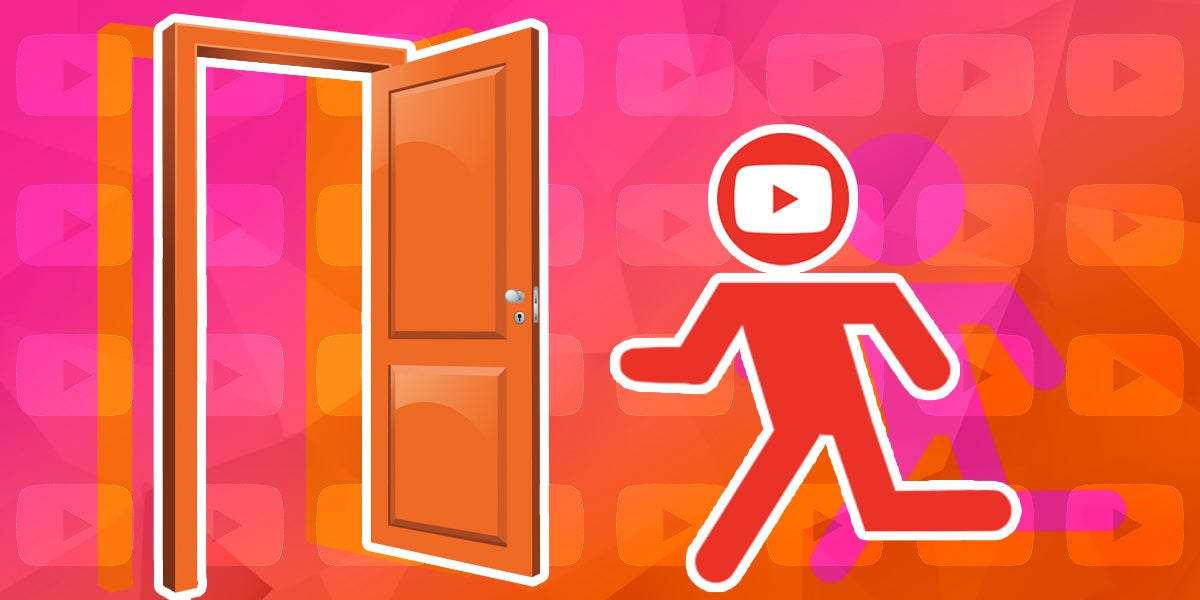
By now, anyone who pays attention to digital media or the creator economy has heard about Watcher Entertainment. The popular YouTube channel from a trio of ex-BuzzFeeders – creators Steven Lim, Ryan Bergara, and Shane Madej – announced they were leaving YouTube for their own proprietary subscription streaming service, where all of their new content would now exclusively debut. Following intense backlash from fans and viewers, the production company has backtracked somewhat. New shows will still debut exclusively behind the paywall, but after one month, YouTube subscribers will get to watch them for free, with ads.
Nonetheless, it seems strange to fault a YouTube channel for growing. A group of creators gaining experience at a large media company like BuzzFeed, then going out on their own and starting a new successful company that hires a lot of other creators, who will now get vital mentorship and on-the-job training of their own sounds pretty healthy. That’s how you build an organic creator economy.
It’s also how YouTube once functioned. One popular show (like, say, The Philip DeFranco Show) could build a consistent base of subscribers and fans, who would get alerted by YouTube when new videos arrived. The reliable ad revenue earned from appealing to this audience with regular new videos allowed individual creators to bring on more behind-the-scenes help and on-camera co-hosts. Which gives rise to a diverse and robust channel of content, that ultimately could branch off into spinoff shows and sister channels (like, say, SourceFed).
Now-defunct animation and comedy studio Rooster Teeth had a similar backstory. The initial success of “Red vs. Blue,” and its consistent ad revenue, over time allowed the group to diversify into other kinds of gaming-themed content, podcasts, and ultimately, new scripted shows and franchises. Like Watcher, Rooster Teeth at one point also tried to leave YouTube and flee to a subscription service of its own, with some initial success.
[Even my own YouTube home, Screen Junkies, followed a similar path. The initial success of “The Screen Junkies Show” and “Honest Trailers” gave rise to an entire network of content from dozens of creators – including me – and ultimately a subscription streaming service called “Screen Junkies Plus,” that had middling success and eventually folded.]
Rather than blaming the Watcher team, Rooster Teeth, or the Screen Junkies for wanting to grow and expand their businesses, it’s worth asking why these creators (and CollegeHumor and so many others) need to leave YouTube in order to do so. YouTube is where they initially found an audience. It’s the most popular streaming platform in the US, by far.
As major media companies learned in the last few years, launching a new subscription streaming platform is extremely difficult. Most consumers willing to pay for streaming content already subscribe to Netflix and up to two or three other services. Getting people to pony up for yet another streaming service, even one with a monthly rate under $10, can feel onerous and excessive. Even massive companies with huge libraries of IP like NBCUniversal and Paramount are making this discovery in real-time, while free services like Tubi and Pluto TV are having massive success.
So with everyone already watching free-to-stream YouTube, it seems baffling that all of these creators would opt to move their content elsewhere, behind a paywall that will obviously keep out many if not most of their established fans. Why do it?
The answer most likely lies with YouTube itself and its ever-changing algorithm. While the company once focused on subscriptions, allowing users to essentially customize their YouTube experience by following their favorite creators and channels.
The emphasis in 2024 is all about constant scrolling and “engagement hacking,” keeping you on the app as long as humanly possible by serving you fresh videos that the algorithm predicts you will enjoy, regardless of your subscriptions and customized preferences. In part, YouTube is doing this by pushing more creators to its TikTok rival, Shorts. But it also means serving new content that’s as similar as possible to the content you’ve recently watched and identifying clusters of videos to recommend that are often watched together.
For some kinds of creators, these changes are hugely beneficial. Anyone focused on individual pieces of content that are pre-designed for maximum shareability and virality will likely flourish in this kind of ecosystem. But it’s a uniquely terrible shift for longer-form channels like Watcher, that make high-quality (read: costly) pieces of content on a diverse array of topics, and count on repeat visits from their regulars and long-term hardcore fans rather than drive-by clicks.
While occasional Watcher content could go viral and make the group a satisfying amount of YouTube ad revenue, it’s the lack of consistency that’s so problematic for growing media companies and channels. They need a constant and reliable revenue feed coming in to fund large-scale future projects, and making expensive TV-style unscripted content for a platform with a tricky algorithm and uncertain viewership introduces a level of risk that makes growing a new brand untenable.
As Madej suggests in the Watcher apology video, the group could probably churn out more immediately clickable low-cost clips that might perform better on the new YouTube. But that’s not the caliber of content they want to create.
There’s obviously room for both TikTok-style viral clips and 8-minute videos in which a guy enjoys a $300 steak. We clearly need a platform that serves both kinds of creators.




